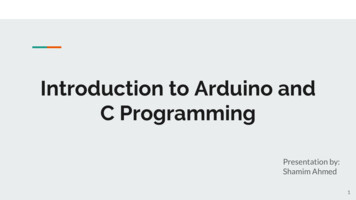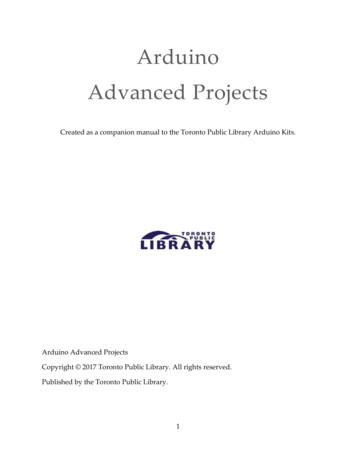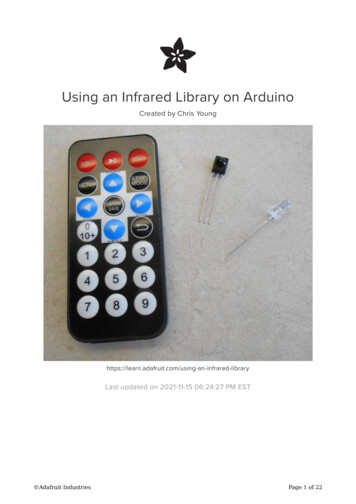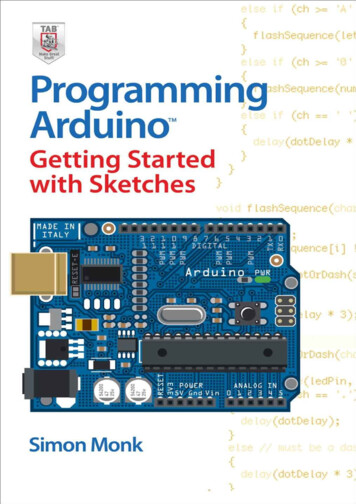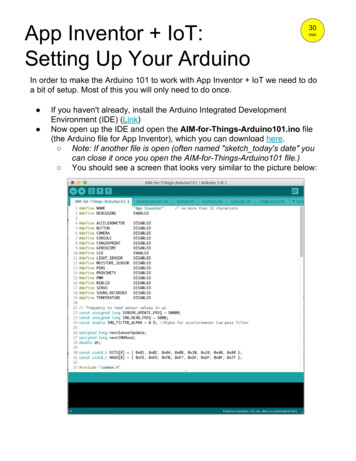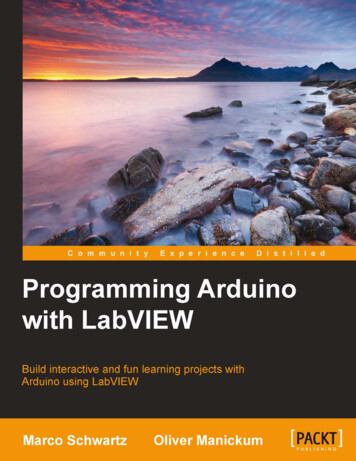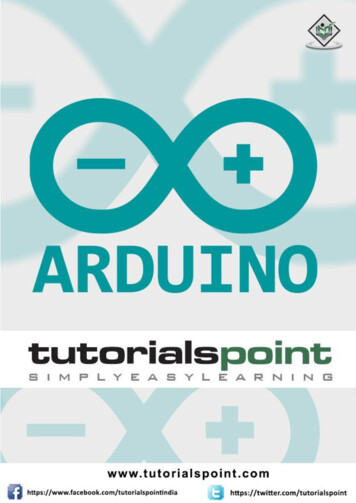
Transcription
Evolution of Arduino ModelsBy: Saidhon Orifov and Ali Batayneh
What is Arduino? Open - source electronics platform based on easy - to - use hardware and software. Microcontroller board that uses a variety of microprocessors and controllers toallow rapid prototyping involving electronics. There is a variety of models, each with a limitless amount of practical application. Arduino projects span a plethora of use cases. Easy to use for beginners, but also flexible enough for advanced users.
History of Arduino Arduino was created in Ivrea Italy as a Masters thesis project. The goal of Arduino was to allow non-technical individuals to create technicalprojects of their own. The Arduino was intended to be affordable. Over 700,000 Arduino boards have been commercially produced since its founding.
Arduino Models Serial Arduino Arduino Nano Arduino Uno Arduino 101
Serial Arduino Release Year - 2005 Processor - ATmega8 Frequency - 16MHz Host Interface - DE-9 Serial Connection Uses RS232 as an interface for programming or communication with a computer. Specifically designed to be easily assembled with the most simple components.
Arduino Nano Release Date - May 15, 2008 Processor - ATmega328 (ATmega168 before v3.0) Frequency - 16 MHz Host Interface - USB Uses a surface - mounted processor Lacks only a DC power jack and uses a Mini-B USB instead ofstandard on
Arduino Nano
Arduino Nano Schematic Each pin has different usage Serial, Interrupts, PWM, SPI, LED8 Analog inputs with 10 bit resolution Digital pins Reference voltage for analog inputs Reset button
Arduino Uno Release Date - September 24, 2010 Processor - ATmega328P Frequency - 16 MHz Host Interface - USB Uses FTDI chip for USB
Arduino Uno
Arduino Uno Schematic 14 Digital I/O pins 6 pins used for PWM 6 analog inputs 16 MHz quartz crystal USB connection Power jack ICSP header Reset
Atmel 328/P High Performance, low powerAtmel AVR 8-Bit MicrocontrollerFamily Advanced RISC architecture Up to 20 MIPS throughput at 20MHz 32 x 8 General Purpose registers Most Single Clock CycleExecution
Arduino 101 Release Date - October 16, 2015 Processor - Intel Curie Frequency - 32 MHz Host Interface - USB
Arduino 101 Module contains two tiny cores, an x86 (Quark) 32 - bit ARC architecture core RTOS - Real Time Operating Systems and frameworks developed by Intel 14 digital input/output pins (4 can be used for PWM) 6 analog inputs USB connector for serial communication Power jack ICSP header with SPI signals I2C dedicated pins
Arduino 101
Intel Curie Block diagram 6-axis accelerometer/gyroscope Bluetooth low energy capabilities
Arduino vs Raspberry Pi Raspberry Pi Fully functional computer, system-on-chip that runs on a Linux OS Advantages Powerfulness Networking No need for deep electronics knowledgeArduino Microcontroller which is not as powerful as Raspberry Pi Advantages Simplicity Robustness Power Consumption Price
Arduino Usage Robot automation Applications and the boards used Smartwatch (Arduino Due) Lake Erie Mamba Gesture Recognition usingAccelerometer
Conclusion Arduino can used for a variety of projects Good for elementary and advanced applications Different models available Good for someone with electronics background and embedded programming
References erometer-and-esp-71faa1
May 15, 2008 · Arduino Nano Arduino Uno Arduino 101. Serial Arduino Release Year - 2005 Processor - ATmega8 Frequency - 16MHz Host Interface - DE-9 Serial Connection Uses RS232 as an in




